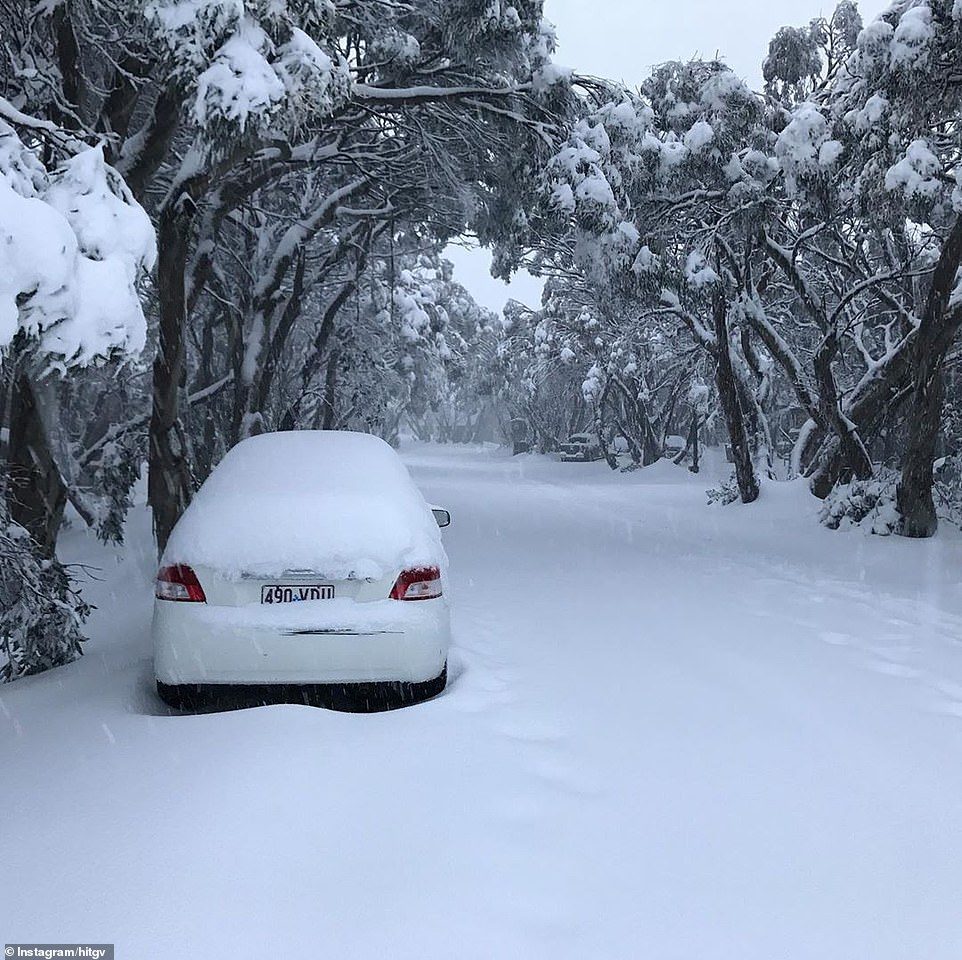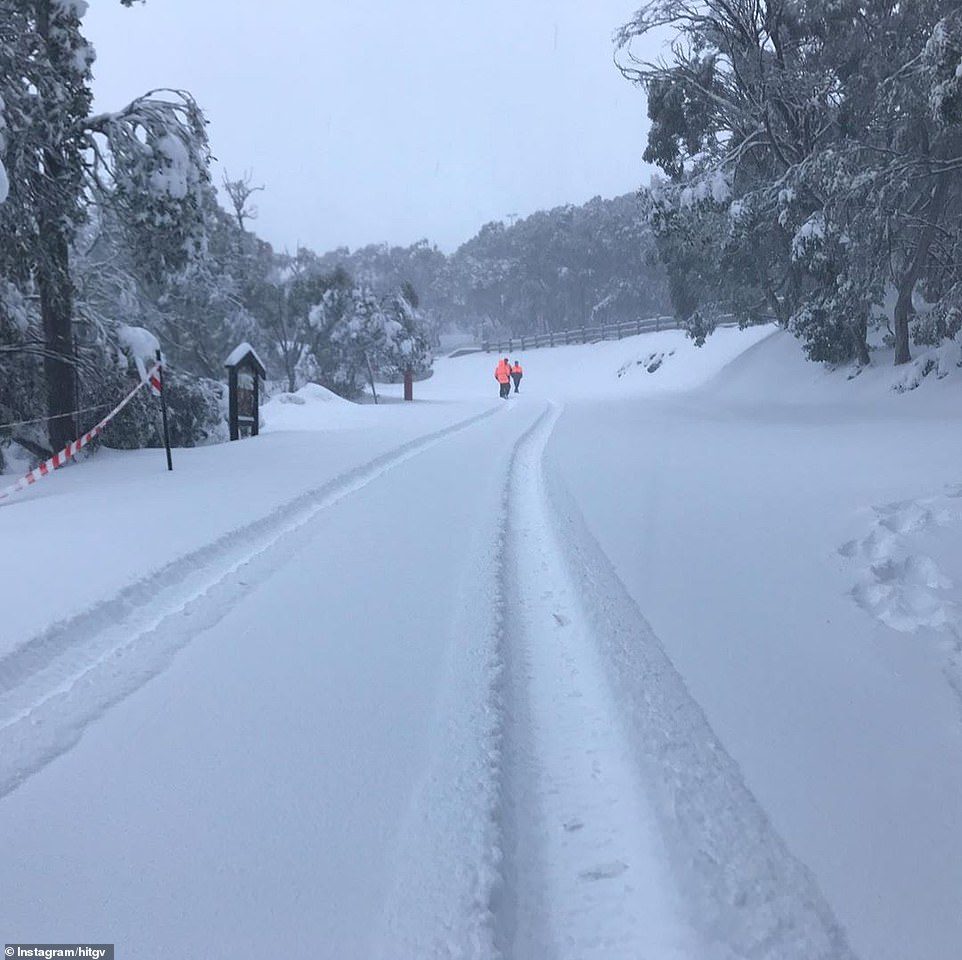
People in New South Wales, Victoria, Tasmania, ACT, South Australia and even Queensland woke up to chilly temperatures on Friday morning - and it's set to get even colder over the next week.
'At the moment, we have a very cold outbreak across the south east from well south of the country from the Antarctic,' the Bureau of Meteorology's Dean Narramore said.
'It's one of those cases where all of the ingredients are coming together for a very cold outbreak.
'Northern Queensland and the Top End are still hot but they will be 2-6C below average over the coming days as this front moves further up.'
Victorians were the hardest hit as parts of the state experienced the coldest start to May ever recorded with the mercury dropping to -4C in some parts.
Ski destination Mount Hotham, in Victoria's North East, is experiencing blizzards and took the crown for the coldest temperature at -4C and an even lower 'feels like' temperature of just -6.5C.
Blizzard conditions are expected across all of the state's Alpine region, bringing up to 50cm of snow by the weekend.
Melbourne is set to experience its coldest ever start to May if the temperature does not exceed 12.1C. It is currently 12C but 'feels like' just 7C due to chill and rainfall.
The Victorian capital will continue to experience cold weather with 13C on Saturday and 14C on Sunday with more rainfall expected.
'Some of the temperatures are 4C to 10C below the May average. It's more typical of July in the middle of winter rather than May,' Mr Narramore said.
Meanwhile, Sydney shivered through its coldest start to May in a decade on Friday with lows of 8C and a maximum temperature of 17C.
The NSW capital will warm up over the weekend with a maximum of 19C on Saturday and 20C on Sunday - although both mornings will be chilly at 11C and a 'feels like' temperature 2-3C lower.
Thredbo gave Mount Hotham a run for its money with a minimum of -4C and a maximum of -3C with up to 12cm of snow expected.
Further north, the cold front crept up into southeast Queensland, where parts of the state experienced their coldest point in 30 years.
In the town of Applethorpe on the Southern Down, the mercury dipped to just 5.1C.
Brisbane dropped by 5C from Thursday to Friday as the minimum temperature fell to 14C and the maximum to 24C.
The cold weather will continue over the weekend for the Queensland capital with minimum temperatures of just 10C and maximums of 24C on both days.
In WA, where the cold front has already passed, is starting to warm up once again with a maximum of 24C in Perth on Friday.
'It (the cold front) clipped Western Australia and amplified before moving into Southern Australia,' Mr Narramore said.
'Now that the front has passed, WA will bounce back to 8-10C above average over the next week. It will basically be hot in the west and cold in the east.'
In Canberra, the maximum temperature was just 7.6C while the lowest was 4.6.
At 10am, the temperature was 6.3C but the 'feels like' temperature was a whopping 10C lower at -3.4C.
The nation's capital will slightly warm up over the weekend, with a maximum of 15C but a very low minimum of 2C.

In Hobart, the minimum temperature was 8.5C while the maximum temperature of 11.8C, although showers made it feel 3C colder.
The Tasmanian capital will continue to shiver over the weekend with a low of 7C and maximum of 11C on Saturday.
Even the Northern Territory has been slightly affected by the cold front as it kicks off its dry season, which will last until October.
As the cold front moves over land, the air will warm up and therefore, have less effect. Mr Narramore said it will be 2-6C below average in the Top End.
Darwin hit highs of 35C and a low of 25C on Friday, which will drop slightly to a maximum of 34C and a low of 21C over the weekend.
Mr Narramore said the current weather conditions are more of a standalone event rather than being any indication of winter this year.



Reader Comments
to our Newsletter